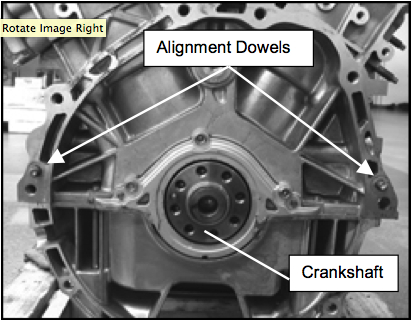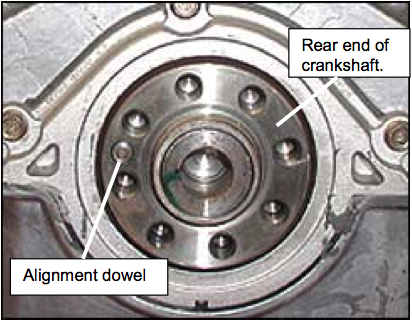The following information may help you and your installer customers avoid damage to engine parts and components.
Cylinder Block/Transmission Dowel Pins (Figure 1)
1. Alignment dowels are installed between the cylinder block and transmission. They ensure accurate alignment of the crankshaft to the transmission input shaft.
2. If you replace an engine or transmission you must make sure the dowels are installed correctly during re-assembly.
3. Improper alignment caused by missing dowels may cause vibration, oil leaks or breakage of drive-train components.
Crankshaft/Drive Plate/Flywheel Alignment Dowel Pin (Figure 2)
1. Most late model engines have an alignment dowel installed in the rear of the crankshaft. This dowel is used to properly align (locate) the drive plate or flywheel with the crankshaft.
2. If you replace an engine that uses this dowel, make sure it is installed during re-assembly.
3. On engines that use this dowel: During re-assembly, the drive plate or flywheel locating hole must be aligned with this dowel for proper operation of the engine control system. If not aligned (clocked) correctly, rough running and MIL “ON” will occur.
Some or all of this information was provided by the Automotive
Parts Remanufacturers Association (APRA). For more information on
technical bulletins available through APRA call 703-968-2772 or visit www.AutoBulletins.com. 














